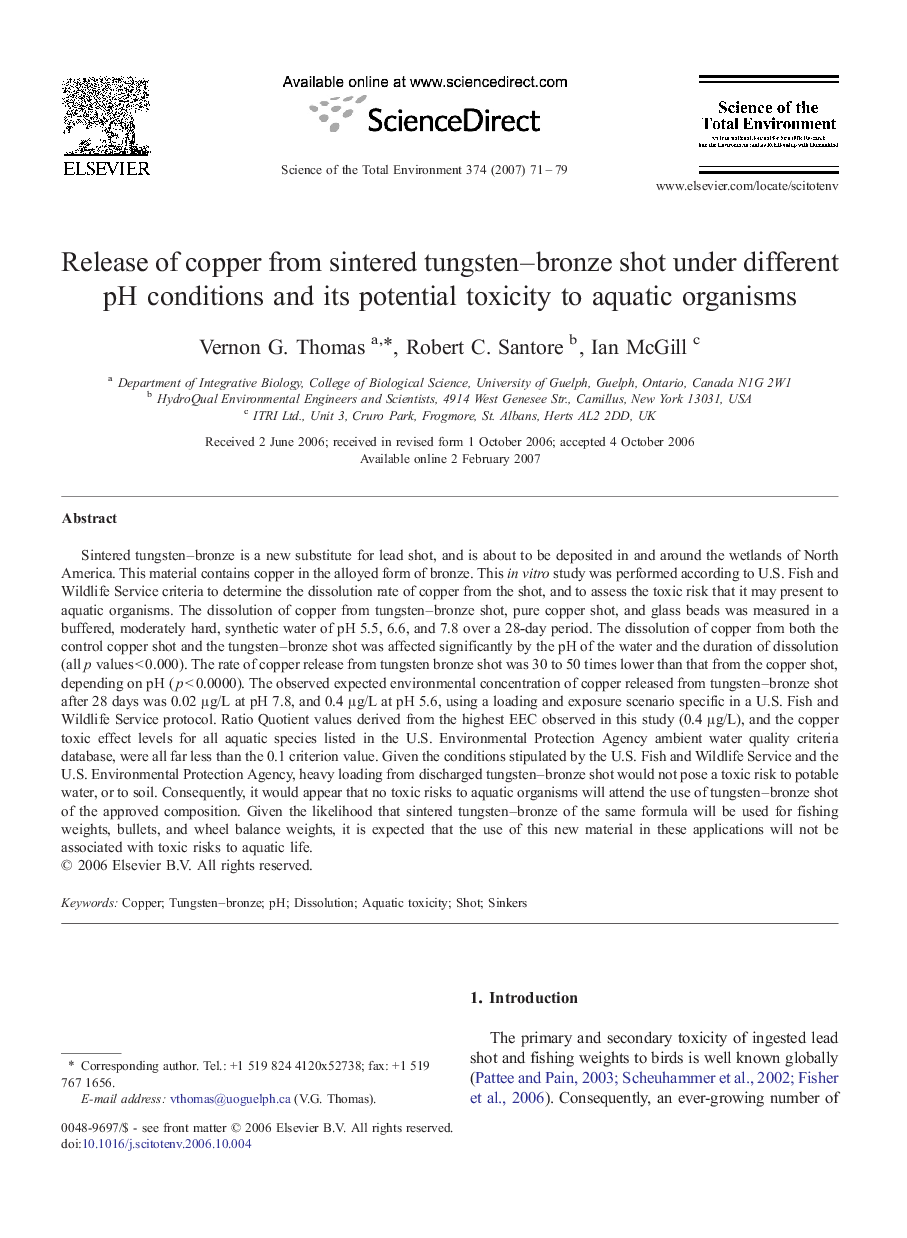| Article ID | Journal | Published Year | Pages | File Type |
|---|---|---|---|---|
| 4433741 | Science of The Total Environment | 2007 | 9 Pages |
Sintered tungsten–bronze is a new substitute for lead shot, and is about to be deposited in and around the wetlands of North America. This material contains copper in the alloyed form of bronze. This in vitro study was performed according to U.S. Fish and Wildlife Service criteria to determine the dissolution rate of copper from the shot, and to assess the toxic risk that it may present to aquatic organisms. The dissolution of copper from tungsten–bronze shot, pure copper shot, and glass beads was measured in a buffered, moderately hard, synthetic water of pH 5.5, 6.6, and 7.8 over a 28-day period. The dissolution of copper from both the control copper shot and the tungsten–bronze shot was affected significantly by the pH of the water and the duration of dissolution (all p values < 0.000). The rate of copper release from tungsten bronze shot was 30 to 50 times lower than that from the copper shot, depending on pH (p < 0.0000). The observed expected environmental concentration of copper released from tungsten–bronze shot after 28 days was 0.02 μg/L at pH 7.8, and 0.4 μg/L at pH 5.6, using a loading and exposure scenario specific in a U.S. Fish and Wildlife Service protocol. Ratio Quotient values derived from the highest EEC observed in this study (0.4 μg/L), and the copper toxic effect levels for all aquatic species listed in the U.S. Environmental Protection Agency ambient water quality criteria database, were all far less than the 0.1 criterion value. Given the conditions stipulated by the U.S. Fish and Wildlife Service and the U.S. Environmental Protection Agency, heavy loading from discharged tungsten–bronze shot would not pose a toxic risk to potable water, or to soil. Consequently, it would appear that no toxic risks to aquatic organisms will attend the use of tungsten–bronze shot of the approved composition. Given the likelihood that sintered tungsten–bronze of the same formula will be used for fishing weights, bullets, and wheel balance weights, it is expected that the use of this new material in these applications will not be associated with toxic risks to aquatic life.
